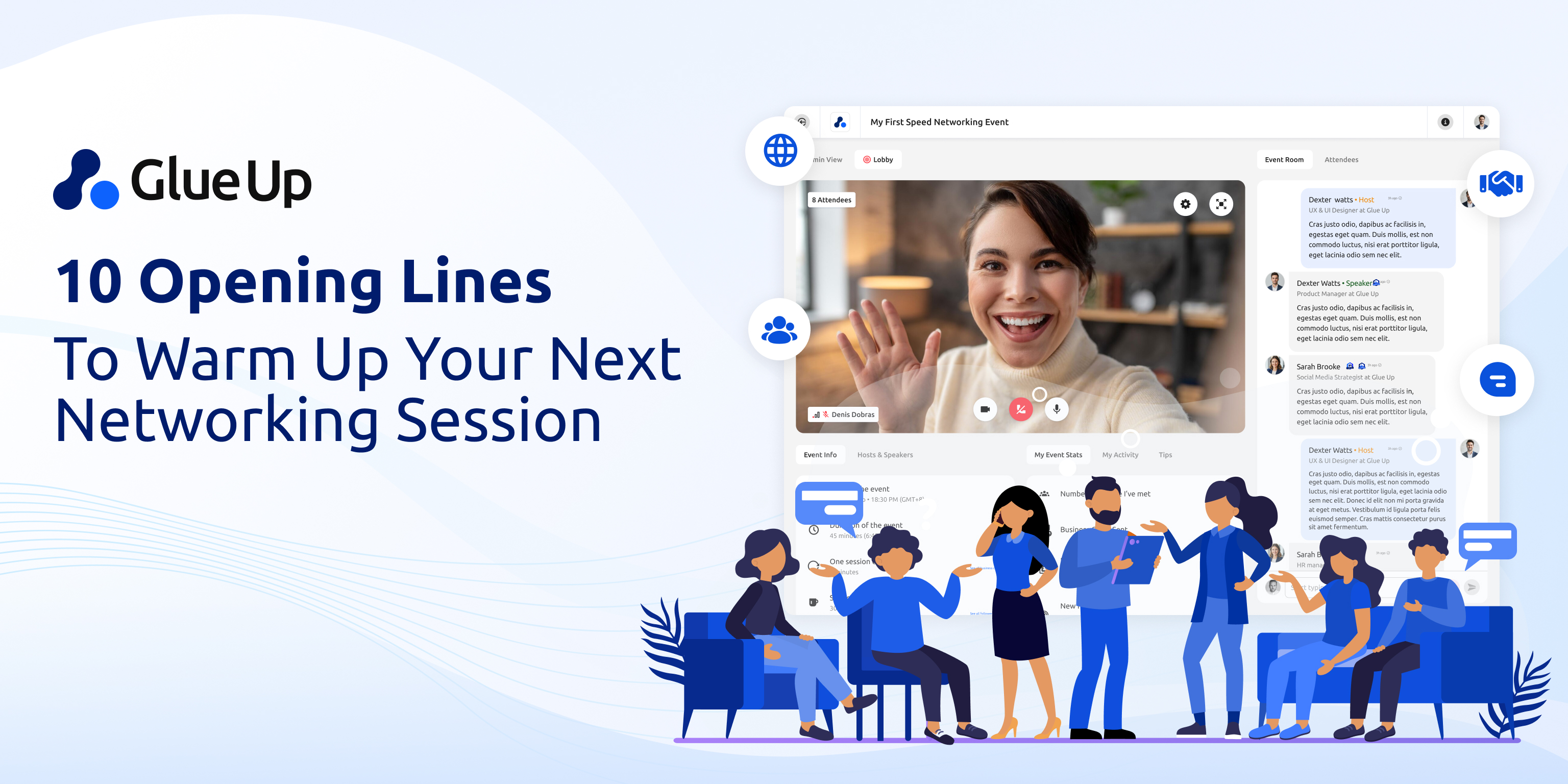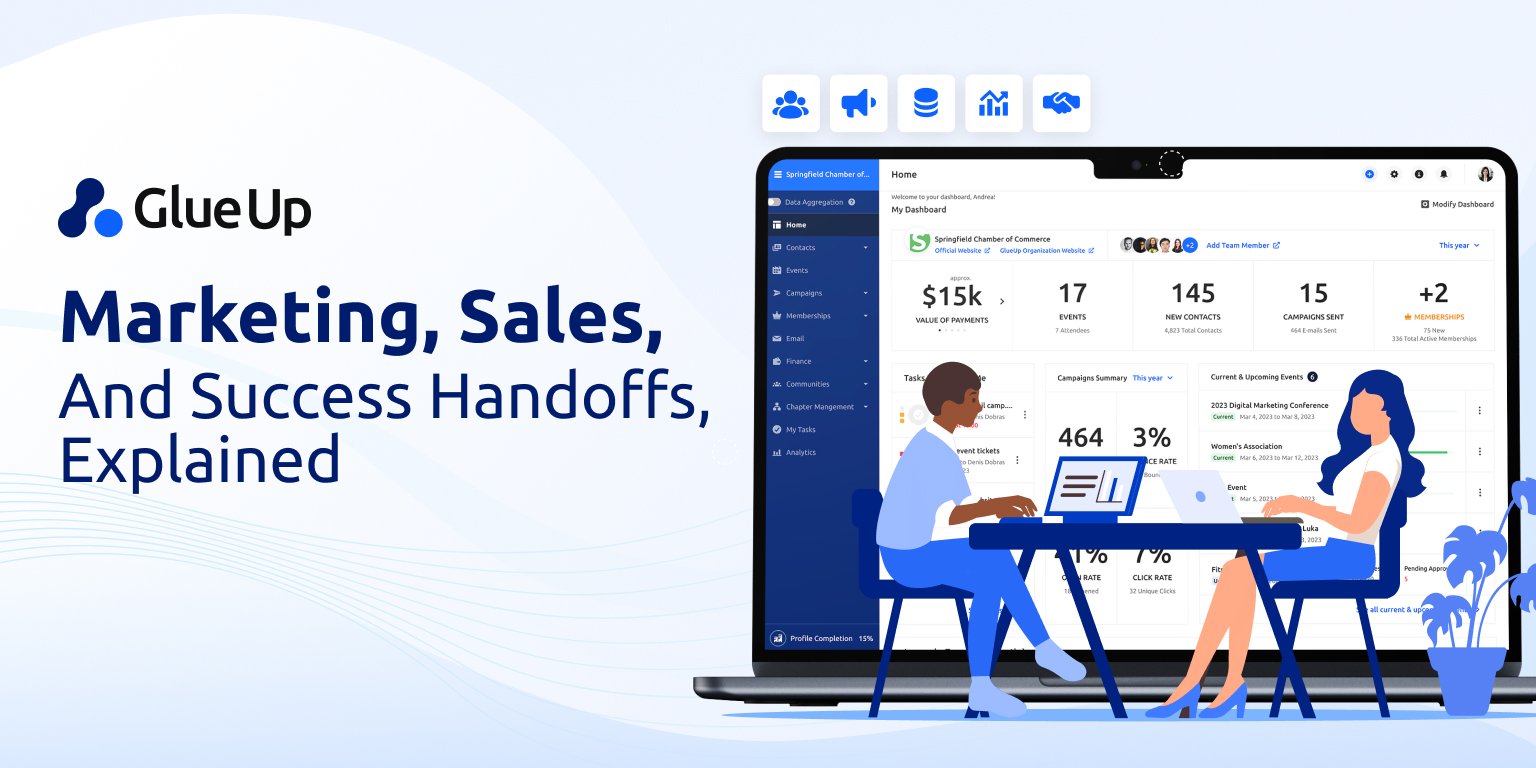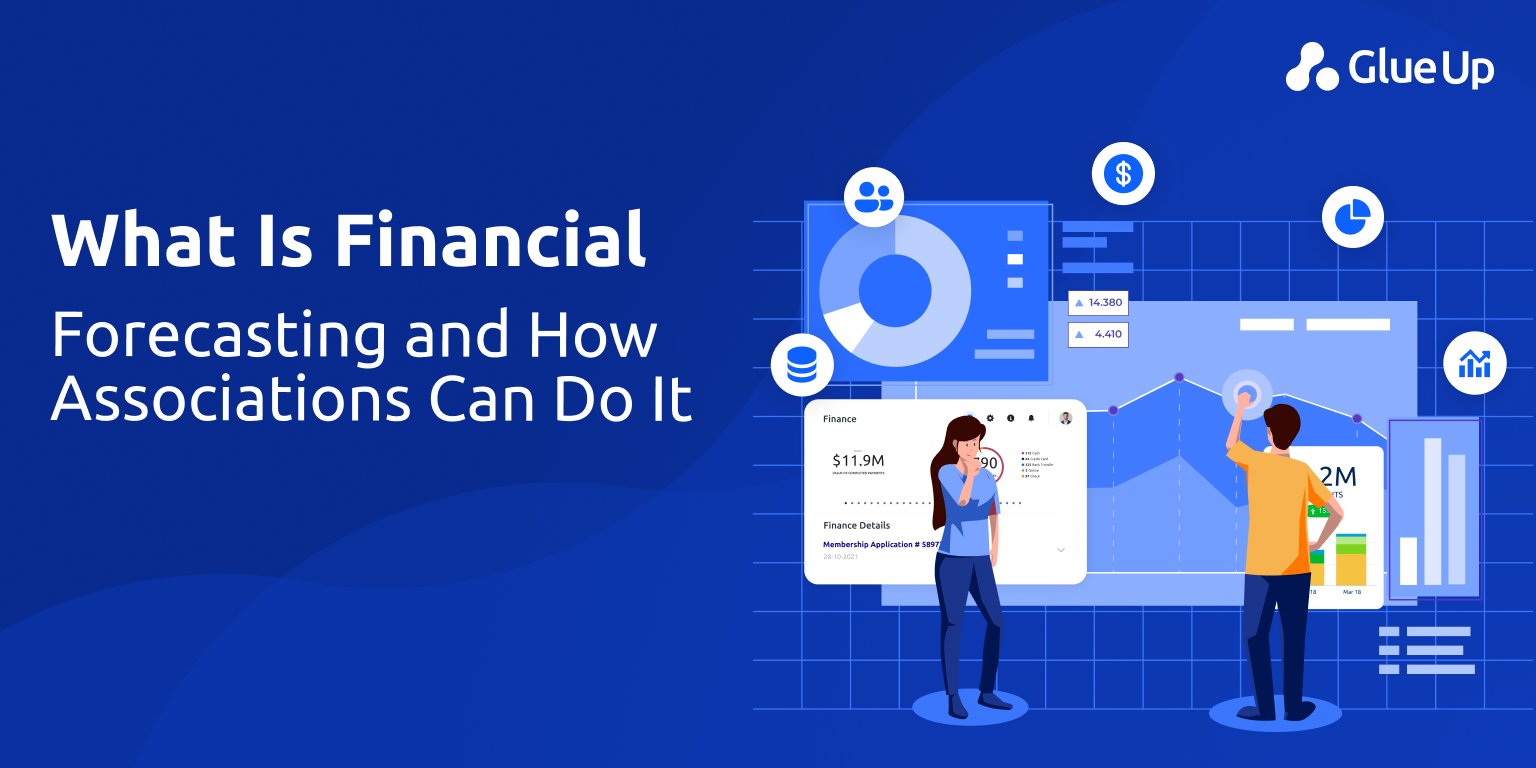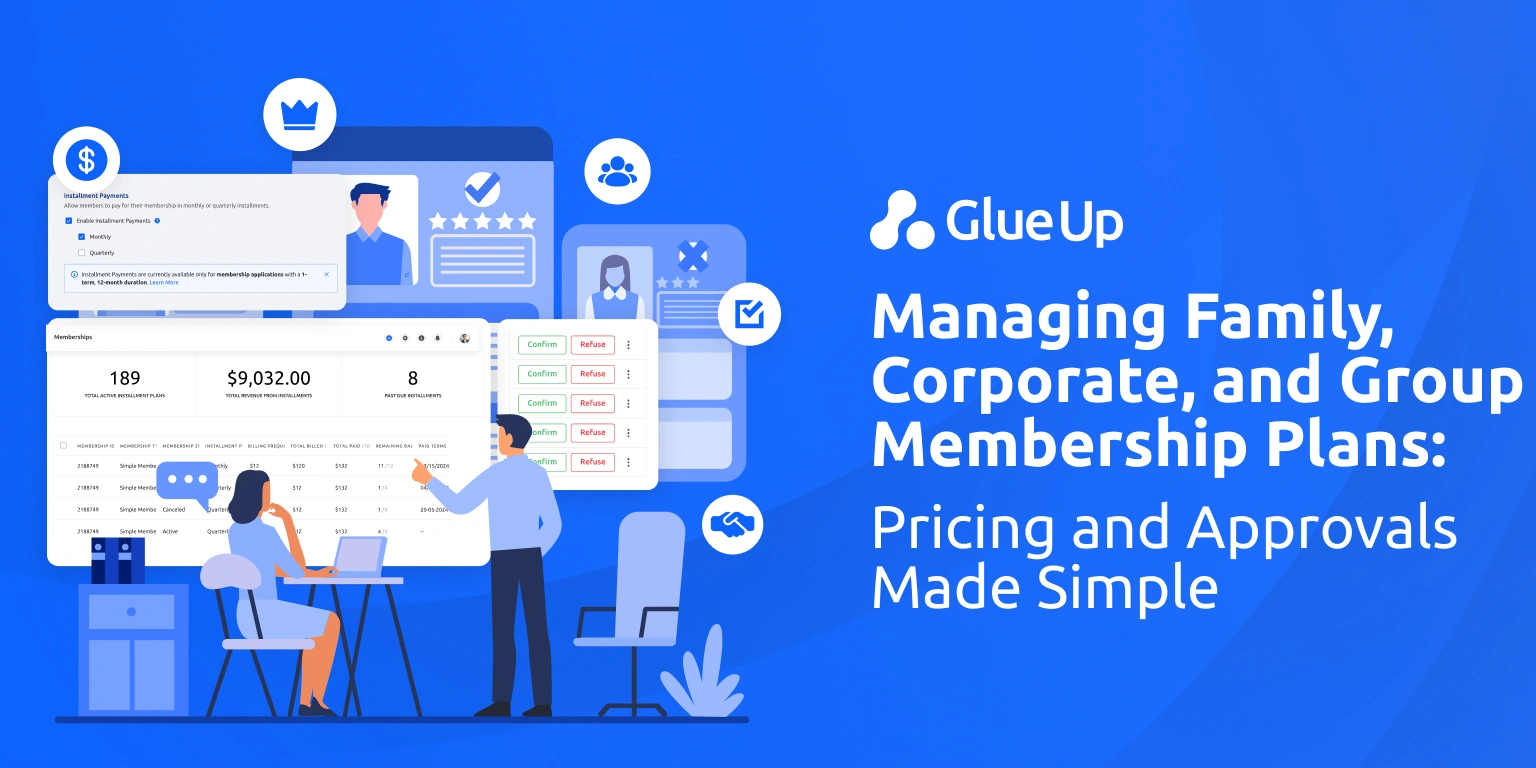
Most of us do not need magic tricks at events. We need a few honest, useful networking conversation starters we can say out loud without cringing, and we need a simple way to turn those first minutes into real value for our organizations and our members.
If your world is associations, chambers, or professional networks, your job is to help people find what they came for, then follow through without dropping the ball. That is the frame for the networking conversation starters below, and it is why we pair every line with a why, a follow-up, and a practical note on how to make the next step stick inside Glue Up.
Key Takeaways
Use purpose-first questions. The best networking conversation starters are short, specific to the event, and hand the mic to the other person. Lead with “what brought you here” or “what would make this worth your time”.
Follow a simple rhythm. Opener → reflective follow-up → micro-give (template, intro, checklist) → clear next step with a date. This turns small talk into progress people can feel.
Run the 3-minute sequence. One line of context, one real question, one reflection, one small give, one specific next step. It is fast, polite, and repeatable across mixers, roundtables, and sponsor chats.
Stick to a light 4-touch cadence. Same-day thank you with the promised resource, day-two clarifier, day-five soft call invite, day-twelve relevant session or directory link. Respect calendars, keep momentum.
Make the follow-through visible. Log notes, tags, and tasks in Glue Up, tie conversations to sessions and contacts, use AI Copilot for quick follow-ups, and report outcomes your board cares about: meetings booked, renewals helped, sponsor ROI steps.
Quick Reads
The Research Behind Networking Conversation Starters
You are already more likable than you think. That is not pep talk. After first meetings, people tend to underestimate how much others liked them. Knowing this removes pressure and makes networking conversation starters easier to say.
Second, people who ask more questions, especially brief follow-ups that reflect what they just heard, are rated as warmer and more responsive. Third, small, appropriate self-disclosure invites reciprocity, and grounding your opener in shared context reduces friction. You do not need scripts that sound clever. You need questions that feel natural, point toward member value, and create a clean reason to talk again.
If you remember one rule, make it this: a short opener, a reflective follow-up, a micro-give, and a clear next step. Every one of the networking conversation starters that follows uses that rhythm.
Networking Conversation Starters You Can Use Before the Keynote
1) “What pulled you to this session today, and what would make it worth your time by the end?”
Follow-up: “If we hear anything on grants or vendor discounts, want to swap notes after?”
Why it works: Purpose first, then their voice. It also makes the next step obvious.
Glue Up note: Drop a note in the contact timeline. Tag the conversation with the session name so your team can filter follow-ups tomorrow.
2) “I am mapping programs members actually renew for. What is one benefit your folks use every quarter?”
Follow-up: “Happy to share our renewal checklist. Would you trade your best-performing perk?”
Why it works: Goes straight to value and outcomes.
Glue Up note: Save a “Renewal Insights” task template. Assign a due date for a short share-back email.
3) “That point on the speaker’s slide landed. How does that show up in your locality?”
Follow-up: “Want to catch the panel together and compare notes?”
Why it works: Shared context and a low-friction invitation.
Glue Up note: Create a two-person “Session Debrief” event note with a checklist of next steps.
4) “I promised myself I would meet three new people. What is one intro I can make for you after the event?”
Follow-up: “I will cc you with our procurement roundtable lead.”
Why it works: A small self-disclosure plus an offer to help.
Glue Up note: Open the directory and queue the intro as a scheduled message. Add a task so you do not forget.
Networking Conversation Starters for Sponsor and Partner Chats
Sponsors are not there for small talk. They want fit, proof, and a path to outcomes. Tune your networking conversation starters to that.
5) “For this audience, what outcome would make this event a win for you?”
Follow-up: “We saw higher lead quality when we offered a short buyer’s guide. Want me to share the template?”
Why it works: Signals service.
Glue Up note: Attach the guide file to the contact record and log the conversation so your events team sees it.
6) “When you review success next month, what metric will you point to first?”
Follow-up: “We track post-event meetings booked as a leading indicator. Want the simple scorecard?”
Why it works: Moves from vague interest to measurable value.
Glue Up note: Send the scorecard as a tracked email. Use AI Copilot to draft a two-line explanation in your voice.
7) “Looking at sponsor tiers, where do you see the best audience fit, and why?”
Follow-up: “I will send two session clips that match your ICP. If it helps, we can shortlist placement ideas.”
Why it works: Specific, generous, and anchored in their goals.
Glue Up note: Link the video clips in the community space and invite them to the discussion thread.
Networking Conversation Starters for Member Renewals and First-Timers
New members and renewals are rarely about slogans. They hinge on usage and confidence. Use networking conversation starters that surface what people actually do.
8) “When your members renew, what did they use in the last 90 days?”
Follow-up: “I will send our 90-day onboarding email that boosted usage.”
Why it works: Time-bound, concrete, and helpful.
Glue Up note: Share the onboarding template from your email library and save a follow-up task.
9) “We are piloting a mentorship match for first-year members. What skill do your folks ask for most?”
Follow-up: “I can share our mentor criteria. Would you share your application form?”
Why it works: Co-creation beats a pitch.
Glue Up note: Store both templates in a shared folder linked to the committee space.
10) “I am collecting small wins to highlight at the board meeting. What is one thing your team did that members thanked you for?”
Follow-up: “Mind if I include that example in our chapter round-up?”
Why it works: Gratitude invites warm disclosure, and it gives you an authentic story for later.
Glue Up note: Add the story to a “Member Wins” content pipeline with status, owner, and publish date.
The Three Minute Sequence That Turns Small Talk into Action
Think of this as a compact operating system for networking conversation starters. You will not use every step in every chat. The rhythm matters more than the script.
Minute 0 to 1: Ground the context
One line, no fluff. “I am with the statewide trade group working on member retention for small firms.” You are not selling. You are giving the other person a simple mental model.
Minute 1 to 2: Ask the primary question
Use one of the networking conversation starters above. Keep it short. Make it about their reality, not your features.
Minute 2 to 2:30: Reflect what you heard
“Sounds like onboarding is the pinch point.” A clear reflection makes people feel heard and makes your next ask polite, not pushy.
Minute 2:30 to 2:45: Offer a micro-give
A template, a checklist, a two-line intro. Small and immediate. The goal is to add value in under 15 seconds.
Minute 2:45 to 3: Close with a clean next step
“Tomorrow morning, I will send the onboarding email and cc our committee chair.” Specific, dated, and easy to accept.
Glue Up move: Create a task with due date, link the person’s directory profile, and paste your promised resource from the content library. Tag the contact with the event code so your post-event report rolls up the right way.
Follow-Up That Actually Happens
Opening lines mean little without the next steps. Here is a light sequence you can keep on repeat. It respects people’s time and still moves conversations forward. It also keeps the phrase networking conversation starters alive in your copy, so searchers find what they need when they land on your page.
Touch 1: Same day thank you
Two lines. One sentence that recalls your chat, one link that delivers the micro-give you promised. If you used the “renewal usage” opener, your link is the 90-day onboarding email.
Glue Up move: Use AI Copilot to draft the message in your voice and schedule it for the end of the day.
Touch 2: Day two clarifier
One question that helps you tailor value. “You mentioned first-year churn. Is it content fit or timing?”
Glue Up move: Log the answer in the contact record. Trigger a workflow that suggests the right committee or resource.
Touch 3: Day five soft ask
Offer a 15-minute slot. Anchor it to their stated outcome. “We can sketch a mentorship pilot with two mentors and one check-in. Want to see a simple outline?”
Glue Up move: Insert your booking link and connect it to your event calendar so registration data stays in one place.
Touch 4: Day twelve relevant invite
If momentum is real, invite them to a session, a roundtable, or a small group chat that fits what they told you.
Glue Up move: Send a trackable invite from the events module. Add a tag like “warm sponsor lead” or “renewal insight” so your report tells a useful story.
This cadence is humane, short, and it keeps your promise. It turns networking conversation starters into relationships that your board can see in a dashboard, not anecdotes floating in inboxes.
Common Mistakes That Stall Momentum
The generic opener with no follow-up. “What do you do?” can work, but most of the time it invites a monologue and leaves you with nothing to respond to. Pick a question that points to an outcome and implies the next step.
Over-disclosing early. You want professional-personal, not personal-personal. One line of context is enough. Let your follow-up do the heavy lifting.
Name misses that go uncorrected. Ask once, repeat it kindly, and use it once more before you part ways. A name handled well is a small signal with outsized impact.
Promising help without a date. If you say you will send a template, say when. Then set the task. It is kind to their calendar and to your future self.
Measuring the wrong thing. Your goal is not “number of business cards.” It is “useful follow-ups sent,” “meetings booked,” and “member outcomes advanced.” Build the report you want to show your executive director before the next board meeting.
Stories From the Hallway
You are at a regional summit. Thirty minutes before the keynote, you run into a membership manager from a neighboring chamber. You open with, “What pulled you to this session, and what would make it worth your time by the end?” She says she needs better sponsor renewal rates.
You reflect it back, then offer a micro-give: “We made a small scorecard for sponsor ROI. I can send it after lunch.” She nods. You close cleanly: “I will send the scorecard and a two-line method. If it is useful, happy to compare notes next week.”
In Glue Up, you log the chat, attach the file, and schedule the email. A week later you have a short call on the books. Two months later, you present a simple joint case to both boards about improving sponsor outcomes. None of this required magic. It required one good line, a real listen, and the habit of finishing the loop.
Another quick one. A first-timer at your association mixer admits, “I am not sure where to start.” You use the mentorship opener, ask for the skill their people want, and share your criteria template. They send you a copy of their form the next day.
You plug both into a committee workspace, tag them for the onboarding group, and invite them to a short welcome session. A small moment becomes a steady relationship. That is the quiet power of well-designed networking conversation starters.
How Glue Up Makes the Next Step Easy
Every opener in this piece points to something you can do later. That is where work usually falls apart. Details slip. Notes get lost. Someone goes on vacation and the thread ends. This is the practical case for managing conversations, follow-ups, and small group invites in one system.
Events, sessions, and check-in: Scan badges, attach notes to session records, and see who attended which talk so your networking conversation starters can reference the same context tomorrow.
Membership CRM: Store the “why” behind every chat, not just the card. Tags like “first-timer,” “sponsor fit,” or “renewal insight” make your pipeline readable.
Community and directory: Send the promised intro as a message in the right space. Keep the conversation in a place your team can see, not in a private inbox.
AI Copilot: Draft short follow-ups in your voice, summarize chat notes, and suggest the next best action based on the goal you logged.
Workflows: When you add a note that includes “mentorship” or “sponsor ROI,” trigger a ready-made checklist. Your future self will thank you.
When your executive director asks what came out of the summit, you will not wave at your memory. You will open a report that shows real touchpoints, real progress, and a short list of next actions already assigned.
FAQ On Networking Conversation Starters
What are effective networking conversation starters for association events?
Short questions that anchor to purpose, name the shared context, and hand the mic to the other person. For example, “What would make this session worth your time by the end?” It is easy to answer and points to a follow-up that matters.
How do I follow up after using networking conversation starters?
Send a two-line thank you the same day with the resource you promised. Ask a clarifier on day two. Offer a short call on day five. Invite them to a relevant space or event on day twelve. Use Glue Up to schedule tasks and track replies so nothing slips.
What should I avoid when starting conversations at conferences?
Avoid generic questions with no path forward, over-sharing in the first minute, and promises without dates. Respect names, respect time, and respect the fact that most people want a clean next step.
A Quick Reference Card You Can Use Tomorrow
Copy these lines into your notes app. These are the networking conversation starters that show up in the wild again and again.
“What pulled you to this session today, and what would make it worth your time by the end?”
“I am mapping programs members actually renew for. What is one benefit your folks use every quarter?”
“That point on the speaker’s slide landed. How does that show up in your locality?”
“I promised myself I would meet three new people. What is one intro I can make for you after the event?”
“For this audience, what outcome would make this event a win for you?”
“When you review success next month, what metric will you point to first?”
“Looking at sponsor tiers, where do you see the best audience fit, and why?”
“When your members renew, what did they use in the last 90 days?”
“We are piloting a mentorship match for first-year members. What skill do your folks ask for most?”
“I am collecting small wins to highlight at the board meeting. What is one thing your team did that members thanked you for?”
Use one, listen well, reflect back, give a small help, and set a time. That is the simple system behind networking conversation starters that actually move people.
Ready to Turn Hallway Chats into Real Outcomes?
You have the networking conversation starters. Now make the follow-ups effortless for your team and visible to your board. Capture notes, set tasks, and send timely messages from one place, all tied to your events and member records.
Book a demo today and turn quick chats into scheduled action.



